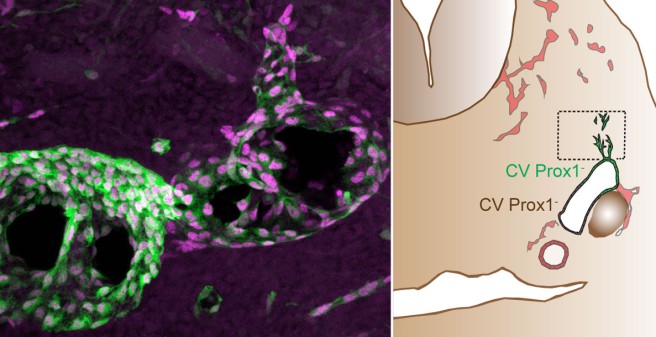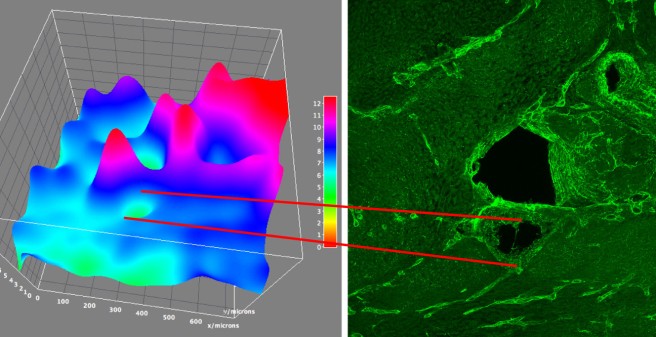The research group Vascular Biology analyses the role of matrix stiffness as a regulator of endothelial cell behaviour in vascular morphogenesis and disease.
Endothelial cells comprise the inner layer of blood and lymphatic vessels. They are exposed to different types of mechanical forces such as shear, stretch and matrix stiffness that synergize with chemical cues to regulate cell behaviour and fate during development, homeostasis and disease. Endothelial cells recognize and respond to these physical stimuli through their cell-matrix and cell-cell adhesions and translate the mechanical information into biological responses in a process called mechanotransduction.
We have recently shown that matrix stiffness fundamentally controls the early steps of lymphatic vascular morphogenesis. Now, we are focusing on analysing the extracellular matrix stiffness of different types of vessels and vascular beds in health and disease, using state-of-art microscopy methods, such as live imaging microscopy, super resolution microscopy and in vivo atomic force microscopy. Our group aims to identify and functionally characterise matrix stiffness regulated genes in blood endothelial cells and lymphatic endothelial cells, with the focus on genes related to cell-matrix adhesion, cell-cell adhesion and endothelial junction regulation.
Pathological tissue stiffening is associated with a variety of vascular diseases, such as lymphedema, cancer, fibrosis and cardiovascular disease. Understanding molecular mechanisms is pivotal to develop new treatment strategies.

- Wissenschaftliche Arbeitsgruppenleiterin

- Wissenschaftliche Mitarbeiterin
- Wissenschaftliche Mitarbeiterin

- Wissenschaftliche Mitarbeiterin
- Technische Angestellte
- Medizin-Doktorand

- Medizin-Doktorandin
- Medizin-Doktorand

